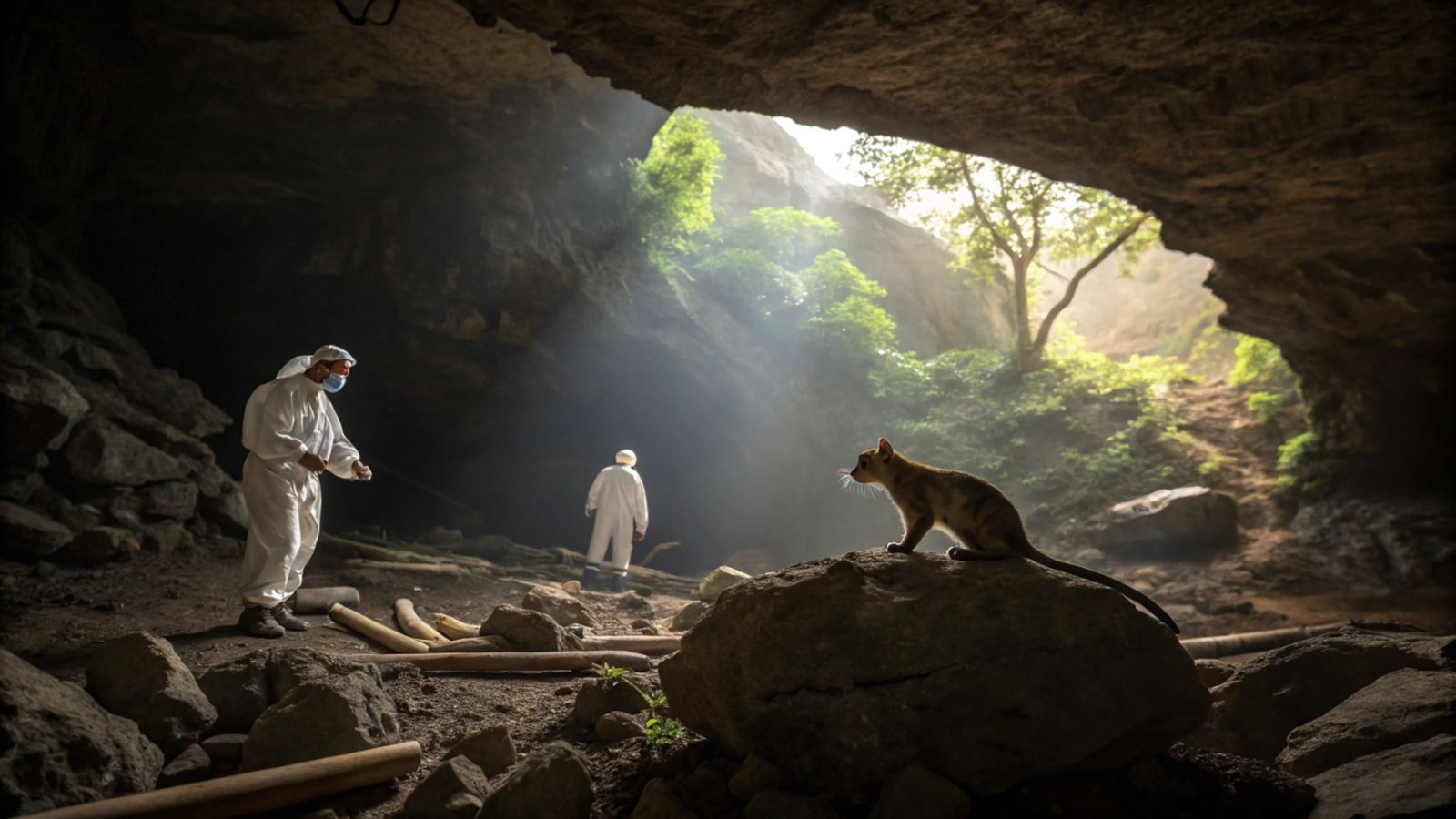Discovery of a miniature prehistoric cat: it could fit in the palm of your hand! 🐱
Published by Cédric,
Article author: Cédric DEPOND
Source: Annales Zoologici Fennici
Other Languages: FR, DE, ES, PT
Article author: Cédric DEPOND
Source: Annales Zoologici Fennici
Other Languages: FR, DE, ES, PT
Follow us on Google News (click on ☆)

The Hualongdong Cave, located in Anhui Province, is a major archaeological site where excavations have been ongoing since 2013. It is here that a fragment of a prehistoric cat's lower jaw was discovered. This fossil, belonging to a species named Prionailurus kurteni, is the smallest ever identified in the feline family. Its size rivals that of the smallest modern cats, such as the black-footed cat or the rusty-spotted cat.
A miniature cat with mysterious origins
The Prionailurus kurteni is an extinct species of leopard cat, much smaller than modern domestic cats. Researchers estimate that this feline weighed just a few hundred grams. Its discovery is all the more valuable because fossils of small carnivores are rare, due to the fragility of their bones in forest environments.
This find suggests an unsuspected diversity among prehistoric leopard cats. Scientists believe that this species shared a common ancestor with domestic cats and Pallas's cats, a hypothesis supported by molecular studies but never confirmed by fossil evidence until now.
A complex ecosystem revealed
The Hualongdong Cave has also yielded dozens of human fossils dating back 300,000 years, as well as stone tools and animal remains. These elements allow for the reconstruction of a rich and varied ecosystem, where small felines coexisted with early humans. Researchers are still unsure if these cats were part of the diet of the cave's inhabitants, but their presence indicates an environment conducive to the coexistence of multiple species.
The exceptional preservation conditions of the cave have allowed for the preservation of this fossil, offering scientists a unique opportunity to study the evolution of felines. This discovery underscores the importance of archaeological sites for understanding the ecological dynamics of the past.
A window into the past
The Prionailurus kurteni reminds us that even the smallest animals can play a key role in understanding ancient ecosystems. Every fossil discovered is a piece of the puzzle that helps us reconstruct the history of life on Earth. Research continues at Hualongdong, promising further revelations about the interactions between species and early humans.
This discovery also illustrates the importance of international collaborations in archaeology and paleontology. Researchers from China, Sweden, and other nationalities have joined forces to study this exceptional site, demonstrating that science knows no borders.